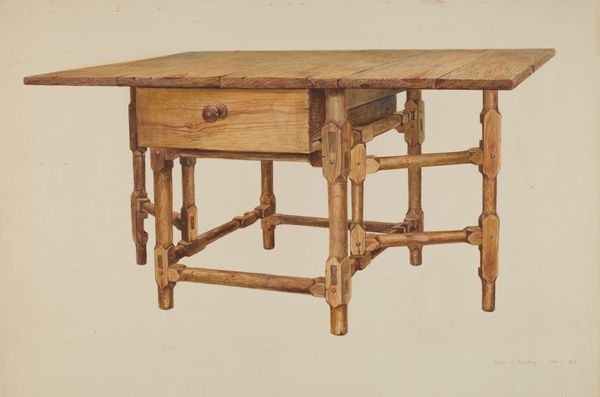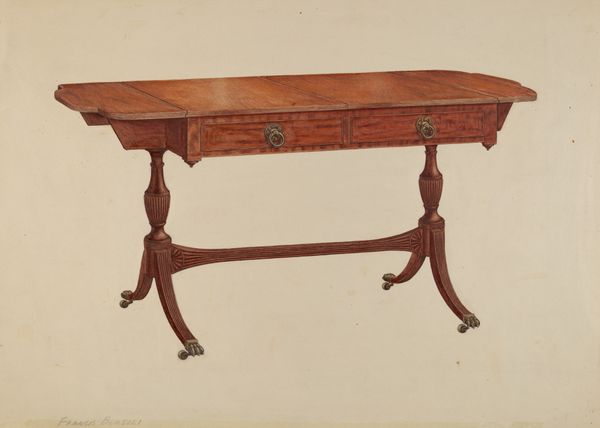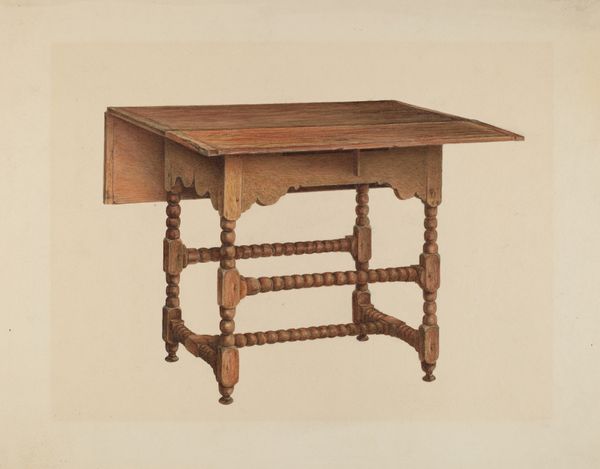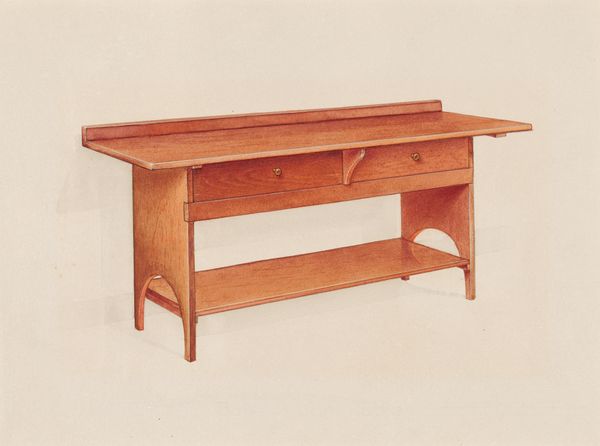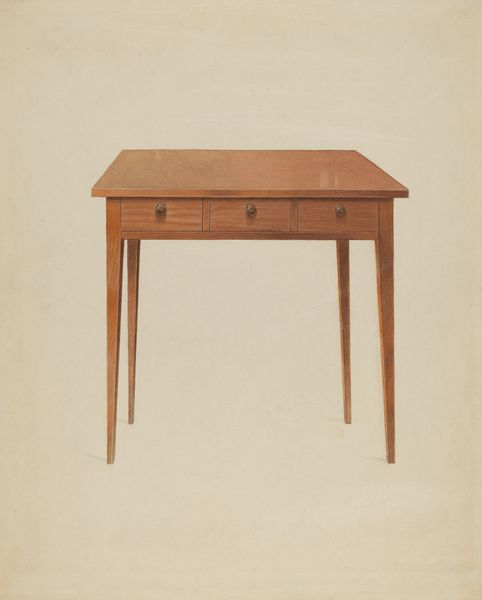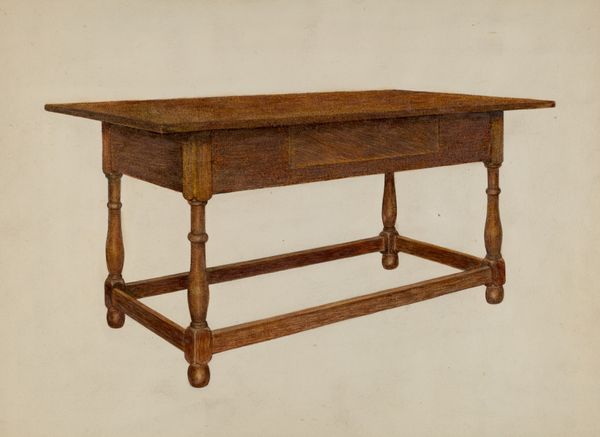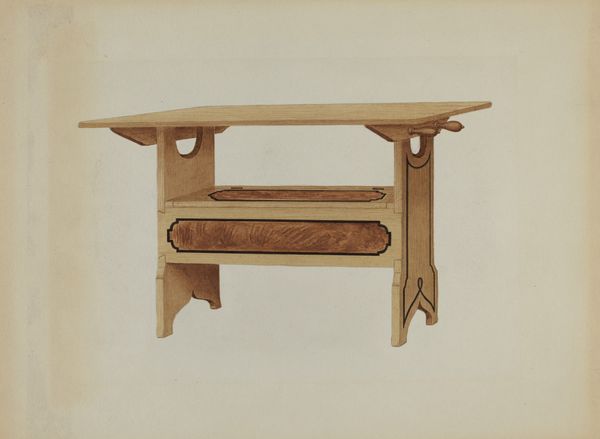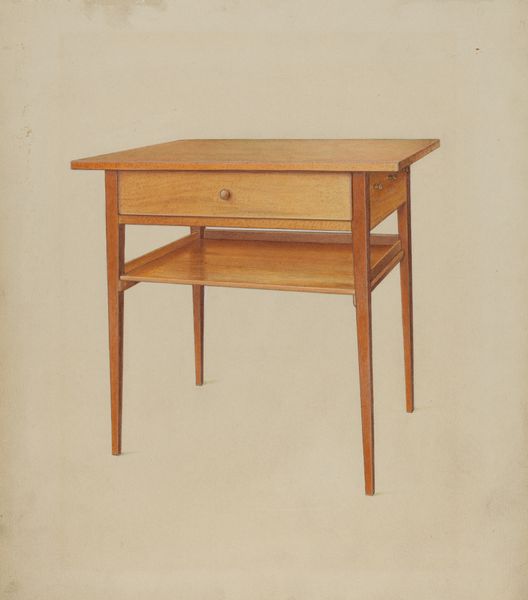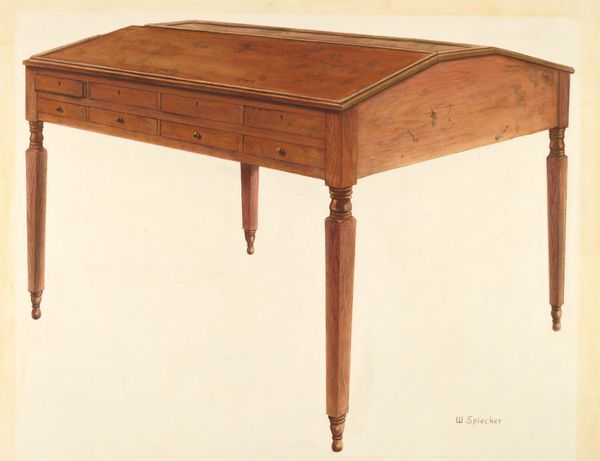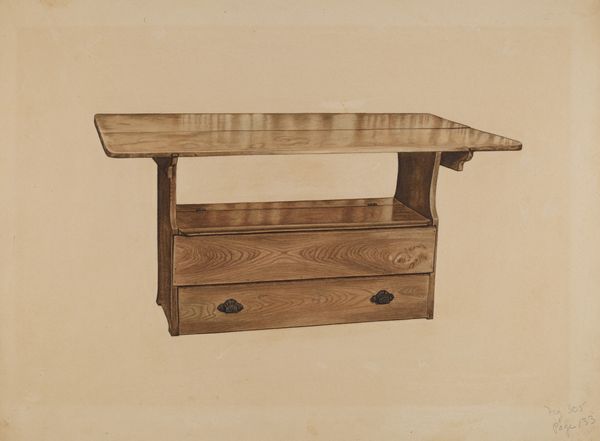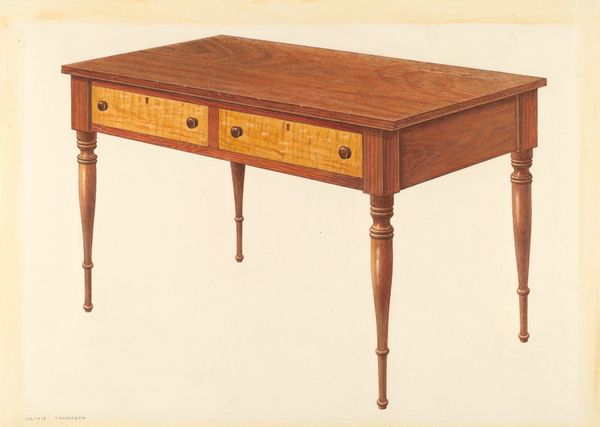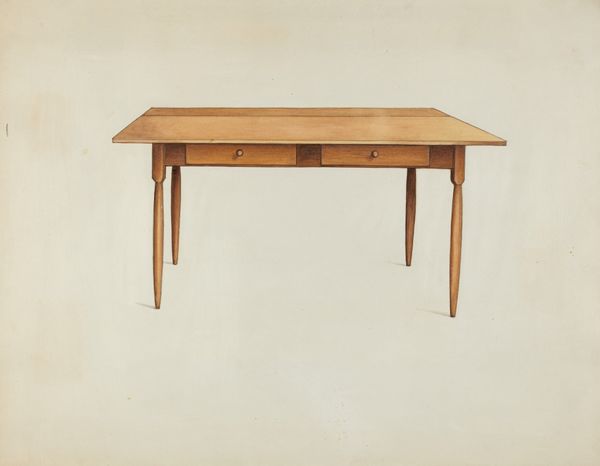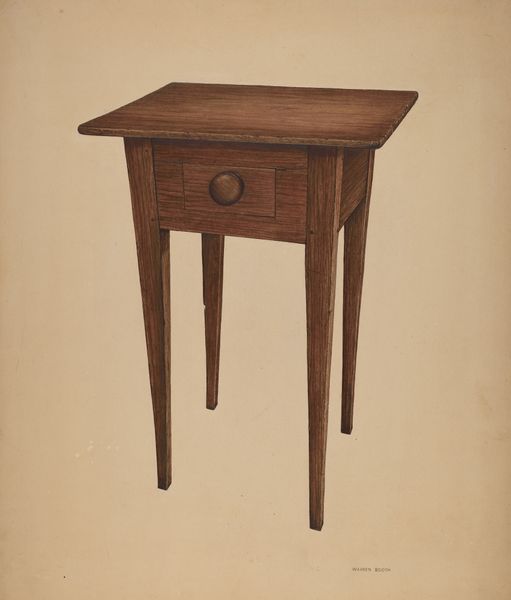
drawing, watercolor
#
drawing
#
watercolor
#
watercolour illustration
#
realism
Dimensions: overall: 22.4 x 30 cm (8 13/16 x 11 13/16 in.) Original IAD Object: overall: 5'long, 31" wide, 27" high
Copyright: National Gallery of Art: CC0 1.0
Curator: Let’s turn our attention to "Baker's Table," a watercolor and drawing, dating back to around 1937, created by Earl Butlin. Editor: It has such a quiet, unassuming presence, doesn’t it? Almost ghostlike against the paper. Makes you wonder what stories it could tell of the hands that have kneaded dough upon it. Curator: Precisely! It speaks volumes about domestic labor in a specific era. Notice the details – the visible joinery, the single drawer with its simple pull. These elements are functional but reveal so much about craftsmanship and the lives of those who used the piece. The choice of watercolor further softens the subject, highlighting the subtle nuances of wood grain and the way light plays across the surface. Editor: Yes, there’s a lovely transparency to the washes of colour, it gives the wood this translucent effect. Makes it almost airy despite being such a solid, grounded form. I keep imagining the baker's hands dusted in flour! It seems strange, in a way, to focus on such a utilitarian object, especially when the context would probably be people going through tough times in the depression. Almost like focusing on the means of survival rather than the survival itself. Curator: The medium contributes too, don’t you think? The very act of elevating a humble object like a baker’s table through fine art materials disrupts traditional hierarchies. It begs questions about the value we place on labor, on utility versus ornamentation. Editor: In many ways this table becomes a silent witness, a receptacle for human endeavor, it invites you to consider lives dedicated to something quite specific, bread. Is that funny? To distill everything down to that one thing. Curator: It prompts us to look closely, perhaps a fresh view on functional design from an era defined by necessity and ingenuity. It's amazing that such simple items were made with such precision and care when resources were stretched. Editor: A quiet triumph of observation, if I may say so. Thanks, Earl Butlin, for reminding us to value both the art and the artisan.
Comments
No comments
Be the first to comment and join the conversation on the ultimate creative platform.
